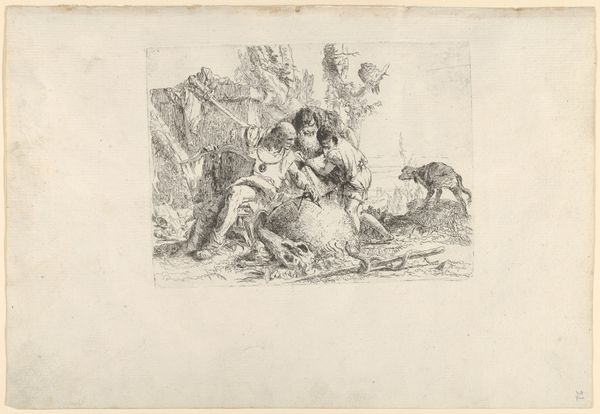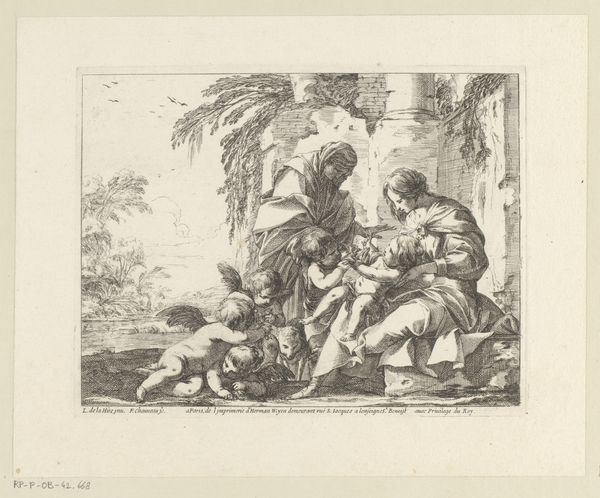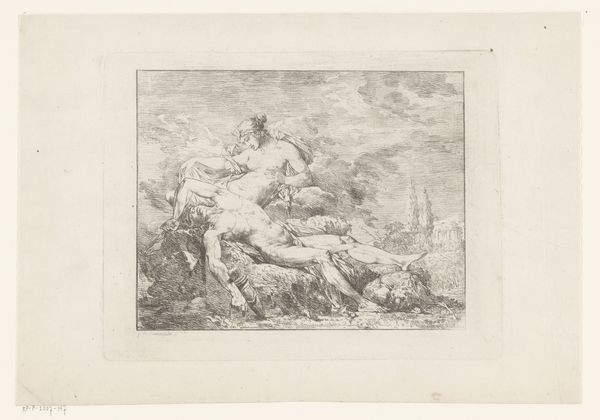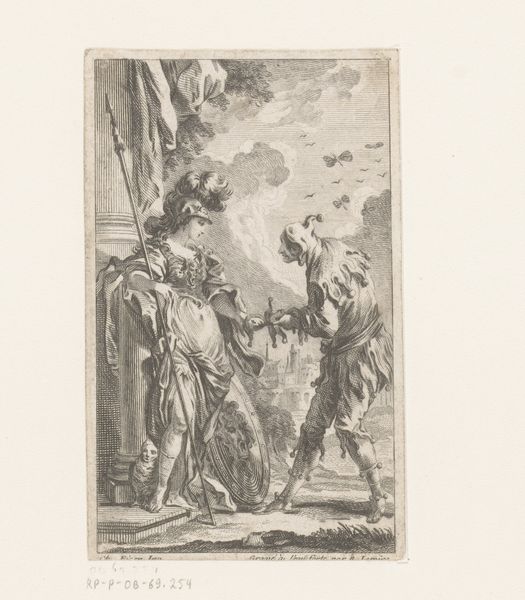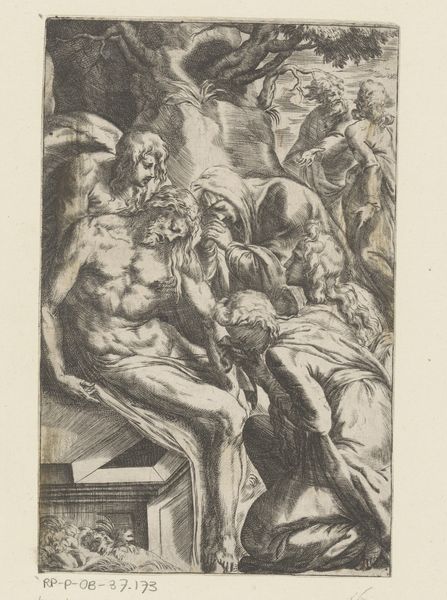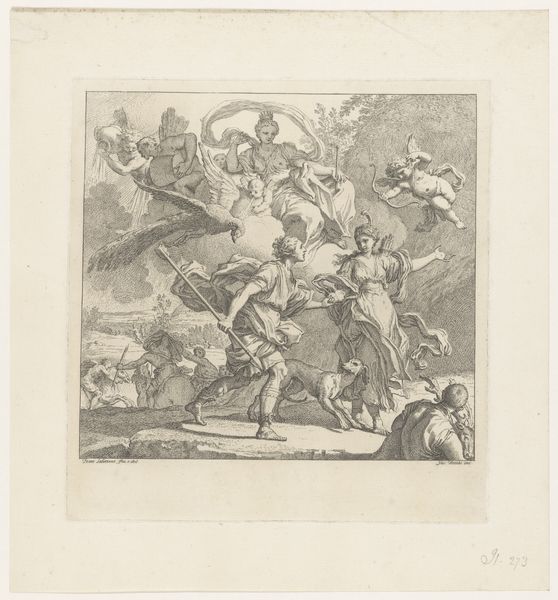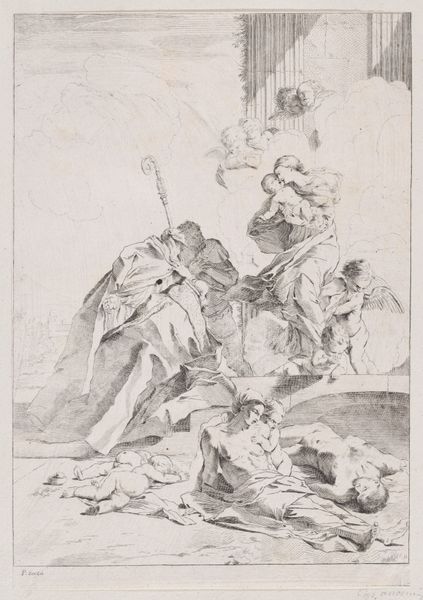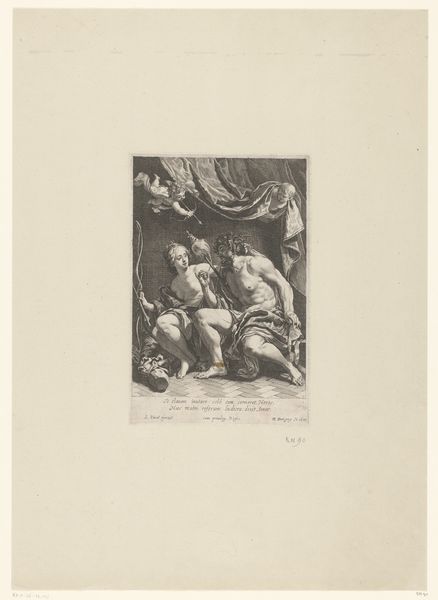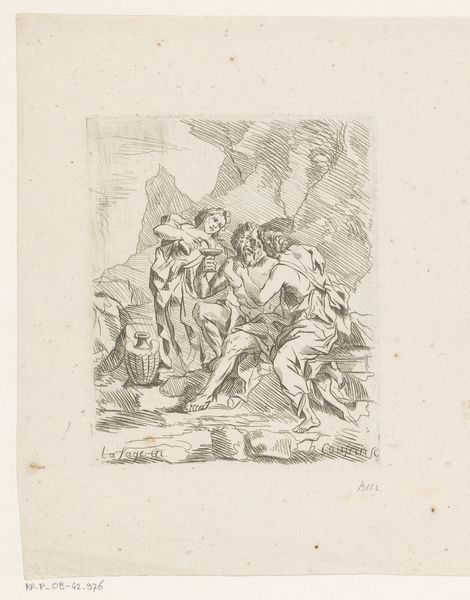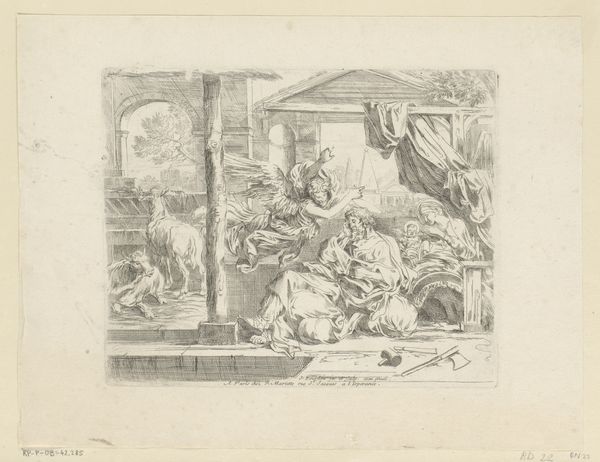
print, etching
#
allegory
#
baroque
#
ink paper printed
# print
#
etching
#
old engraving style
#
figuration
#
history-painting
Dimensions: height 267 mm, width 185 mm
Copyright: Rijks Museum: Open Domain
Editor: This etching, "Three Saints as Intercessors for Victims of the Plague," created after 1630 by an anonymous artist, portrays a really bleak scene. There are corpses on the ground while holy figures appear to be ascending. How would you interpret its historical context and its message, especially considering the imagery's socio-political role? Curator: This piece really speaks to the public's anxieties surrounding disease and death in the 17th century. Consider that plague outbreaks were relatively common, and images like this provided both solace and a means of social commentary. The saints are positioned as intermediaries, appealing to divine power during times of crisis. Does it make you wonder about the power structures at play here? Editor: Definitely! It suggests people looked to the church for help when earthly solutions failed. But who was this print aimed at, and how would its message been received? Curator: Good questions. Prints like these would have circulated amongst a relatively broad segment of society, from the wealthy, who could afford them, to the clergy who used them for instruction. These images reinforced the church's authority and the importance of faith in navigating societal calamities. Note how the “old engraving style” influences our reception of the artwork as being very historical and traditional? Editor: Right, the medium itself contributes to the sense of history. Thinking about the Rijksmuseum’s acquisition and display of this work, do you feel that impacts its message today? Curator: Absolutely. The act of a museum collecting and exhibiting it reframes its message. It's less about direct religious appeal and more about historical understanding, artistic value, and considering the broader societal conditions that produced it. Editor: That’s fascinating. It’s gone from being an active tool of faith to an object of study. I'll never look at religious art the same way again. Curator: Exactly! Seeing it as an object of social, cultural, and artistic production deepens our understanding.
Comments
No comments
Be the first to comment and join the conversation on the ultimate creative platform.

